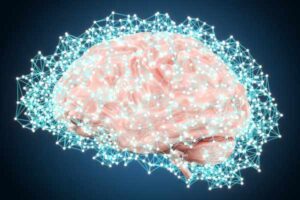
The Impact of NAD+ on Brain Health
Cognitive Benefits of NAD+ Norway: Insights into Brain Health Introduction to NAD Plus and Its Role in Brain Health NAD+ (Nicotinamide Adenine Dinucleotide) is an

NAD+ (Nicotinamide Adenine Dinucleotide) is a coenzyme present in all cells and is essential for life. It plays a pivotal role in cellular metabolism and is also a co-substrate for enzymes involved in pathways that modify aging [1]. As we age, our NAD+ levels naturally decline, which can lead to a range of age-related health issues [2], which is why Norway scientists have developed NAD+ Therapy.
Norway Research has demonstrated that replenishing NAD+ levels through the administration of its precursors can have beneficial effects against aging and age-related diseases [3]. This is because NAD+ is crucial for the functioning of sirtuins, a group of proteins believed to slow the aging process. A significant reduction in sirtuin activity and its reported anti-aging effects are associated with NAD+ depletion [4].
NAD+ therapy is an all-natural treatment plan for combating chronic diseases and age-related health problems. These treatments, which can be administered via IV, are believed to slow aging, promote cell regeneration, repair and lengthen telomeres.
In addition to these benefits, boosting NAD+ levels can also improve focus and memory, enhance sleep quality, and increase energy. While studies are still ongoing to establish its effectiveness, NAD+ is already being hailed as a promising molecule in the field of anti-aging and regenerative medicine [2].
Nicotinamide Adenine Dinucleotide (NAD+) is a coenzyme that is integral to cellular functions and metabolic processes. Found in every cell of our body, NAD+ plays a critical role in energy metabolism, DNA repair, inflammation management, chromatin remodelling, and stress response [5].
At the heart of its function, NAD+ participates in redox reactions leading to the formation of ATP, the primary cellular energy source [2]. It acts as an electron carrier, transferring electrons from one molecule to another within cells, which facilitates numerous reactions and processes [6].
NAD+ also plays a crucial role in the process of glycolysis, a metabolic pathway that converts glucose into pyruvate, generating energy for cellular activities. This coenzyme is essential for maintaining cellular health and function [7].
Moreover, Norway research suggests that higher levels of NAD+ can boost cell resistance, potentially improving cognitive function. It’s also involved in mitochondrial health, further underscoring its importance in maintaining overall cellular well-being [6].
The structure of NAD+ includes an ATP molecule bonded to a vitamin B3 molecule, showcasing its connection to energy metabolism. Overall, the science behind NAD+ therapy underlines its fundamental role in supporting cellular processes and contributing to health and longevity.
As NAD+ therapy has emerged as a promising tool for promoting graceful aging, Norway research has identified that this coenzyme, found in every cell, plays crucial roles in various bodily functions, from energy metabolism to DNA repair. Recent research highlights NAD+ therapy’s potential in delaying age-related decline by:
The potential future of NAD+ in health and aging is promising, with ongoing research indicating its role in slowing or even reversing aspects of aging and delaying the progression of age-related diseases [8]. The therapeutic potential of dietary boosters like NAD+ therapy could improve impaired NAD+ availability that may promote the development of age-related conditions.
As explored above, NAD+ also plays pivotal roles in energy metabolism pathways, including glycolysis, the TCA cycle, OXPHOS, and FAO3. Future large-scale and long-term clinical trials are needed to investigate the potential anti-inflammatory effects of NAD+ precursors [8].
Furthermore, the role of NAD+ therapy in regenerative medicine is becoming evident. It not only plays a key role in skin aging but also demonstrates great potential to improve multiple aspects of age-related decline across the whole body. The health potential of targeting NAD+ homeostasis is still an underexplored field for future interventions of non-communicable disorders.
Direct SARMs is committed to paving the way in supplying high purity NAD+ for research purposes worldwide.
[1] The Role of NAD+ in Regenerative Medicine : Plastic and Reconstructive Surgery (lww.com)
[2] The Role of NAD+ in Regenerative Medicine – PMC (nih.gov)
[3] Therapeutic potential of boosting NAD+ in aging and age-related diseases – ScienceDirect
[4] NAD+ metabolism, stemness, the immune response, and cancer | Signal Transduction and Targeted Therapy (nature.com)
[5] NAD+ metabolism: pathophysiologic mechanisms and therapeutic potential | Signal Transduction and Targeted Therapy (nature.com)
[6] What is NAD+? | Why Is It Important? | NMN.com
[7] Nicotinamide Adenine Dinucleotide – an overview | ScienceDirect Topics
[8] NAD+ in Aging: Molecular Mechanisms and Translational Implications – PMC (nih.gov)
[9] Supplementation with NAD+ and Its Precursors to Prevent Cognitive Decline across Disease Contexts – PMC (nih.gov)
ALL CONTENT AND PRODUCT INFORMATION AVAILABLE ON THIS WEBSITE IS FOR EDUCATIONAL PURPOSES ONLY.
DISCLAIMER: These products are intended solely as a research chemical only. This classification allows for their use only for research development and laboratory studies. The information available on our Norway Direct Sarms website is provided for educational purposes only. These products are not for human or animal use or consumption in any manner. Handling of these products should be limited to suitably qualified professionals. They are not to be classified as a drug, food, cosmetic, or medicinal product and must not be mislabelled or used as such.

Cognitive Benefits of NAD+ Norway: Insights into Brain Health Introduction to NAD Plus and Its Role in Brain Health NAD+ (Nicotinamide Adenine Dinucleotide) is an

Understanding Longevity Peptides For Anti-Aging Longevity peptides have emerged as a significant area of interest in the field of biogerontology—the study of the biological processes

Worldwide
shipping

Visa/Mastercard/Zelle
Cryptocurrency /Transfers

Safe and Secure Shopping

We Distribute
From

YOU MUST BE OVER 21 YEARS IN ORDER TO USE THIS WEBSITE. All of the products are to be handled only by properly trained and qualified LABORATORY or RESEARCH professionals.